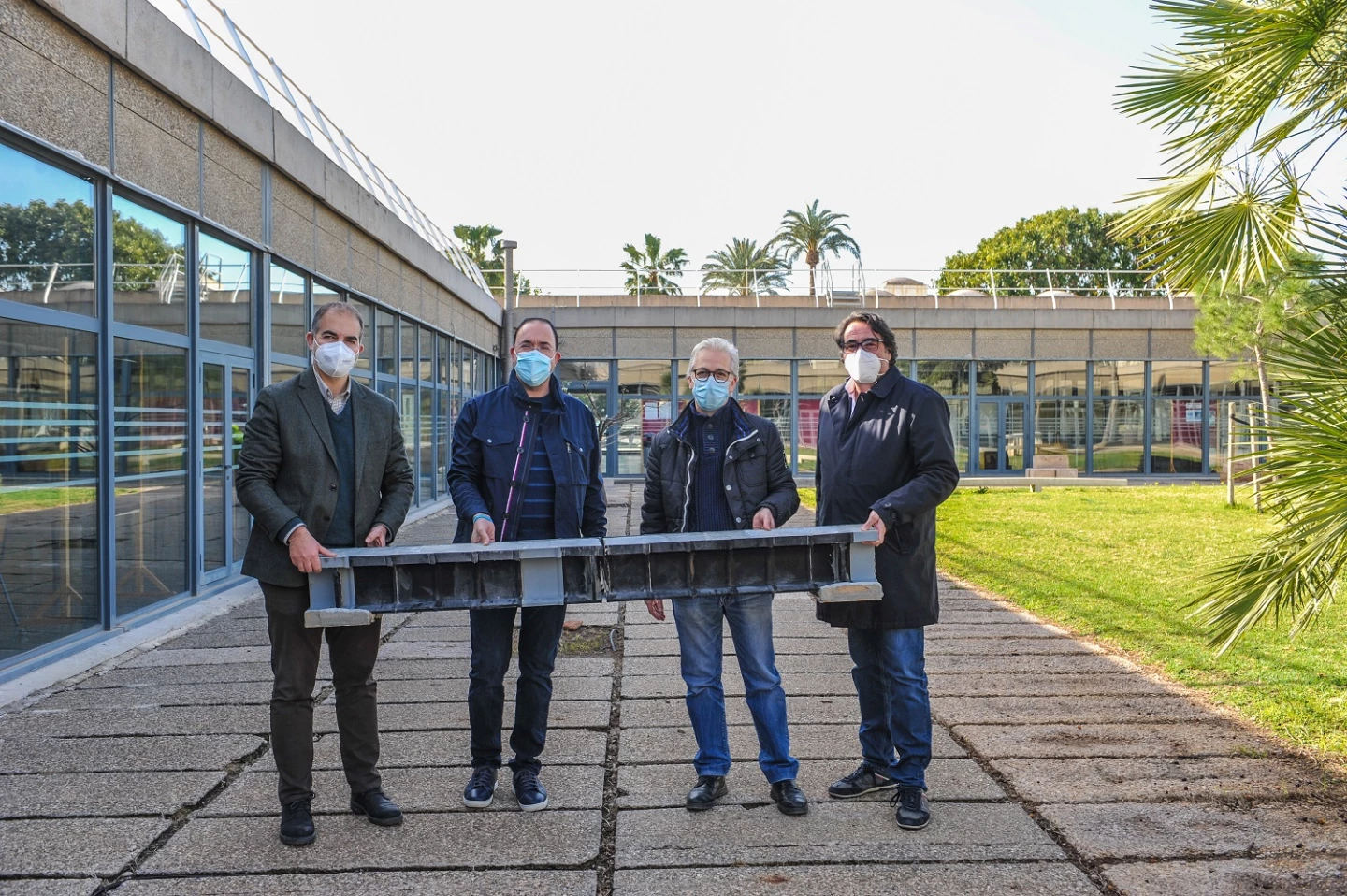Reinforced concrete beams serve as important structural elements for buildings and bridges, but they are long and heavy and therefore require large machinery to both transport and install. Researchers at Spain's Polytechnic University of Valencia have spent the past few years working on a more manageable alternative, patenting a system that uses "Lego-like" segments of 3D-printed plastic that can be pieced together for significant savings on weight and construction time.
“Our goal was to propose an alternative to the current reinforced concrete beams," says Polytechnic University of Valencia's José Ramón Albiol. "These are made using profiles built for the length of the piece, which requires expensive installation and are hard to transport.”
The team has been developing its alternative for almost three years, and has now landed on a design it hopes can shake things up in the world of construction. The system consists of a series of individual segments that can be 3D-printed using recycled plastics, and can then be assembled on site and concreted over to form a structural beam. The internal composition of these individual segments is inspired by the way thick and compact human bones are formed, and offer the beams some useful properties.

“This is what we have transferred to these revolutionary beams, specifically to their profiles," says Albiol. "It is a very intelligent natural system and its reproduction in these beams awards them, with the low structural weight, very high mechanical capabilities.”
According to the team, the beams weigh up to 80 percent less than standard concrete beams, and feature no metal which eliminates the risk of corrosion. What's more, their 3D printed nature lends itself to easy customization, with the beams able to tailored to suit the necessary dimensions for the job at hand.

“To be able to customize the beams in situ makes it possible to adapt the characteristics of each of them to the structural needs at each point of construction," says team member Miguel Sánchez.
The team has patented its new design for structural beams, with a view to commercializing the technology.
Source: Polytechnic University of Valencia via AlphaGalileo








